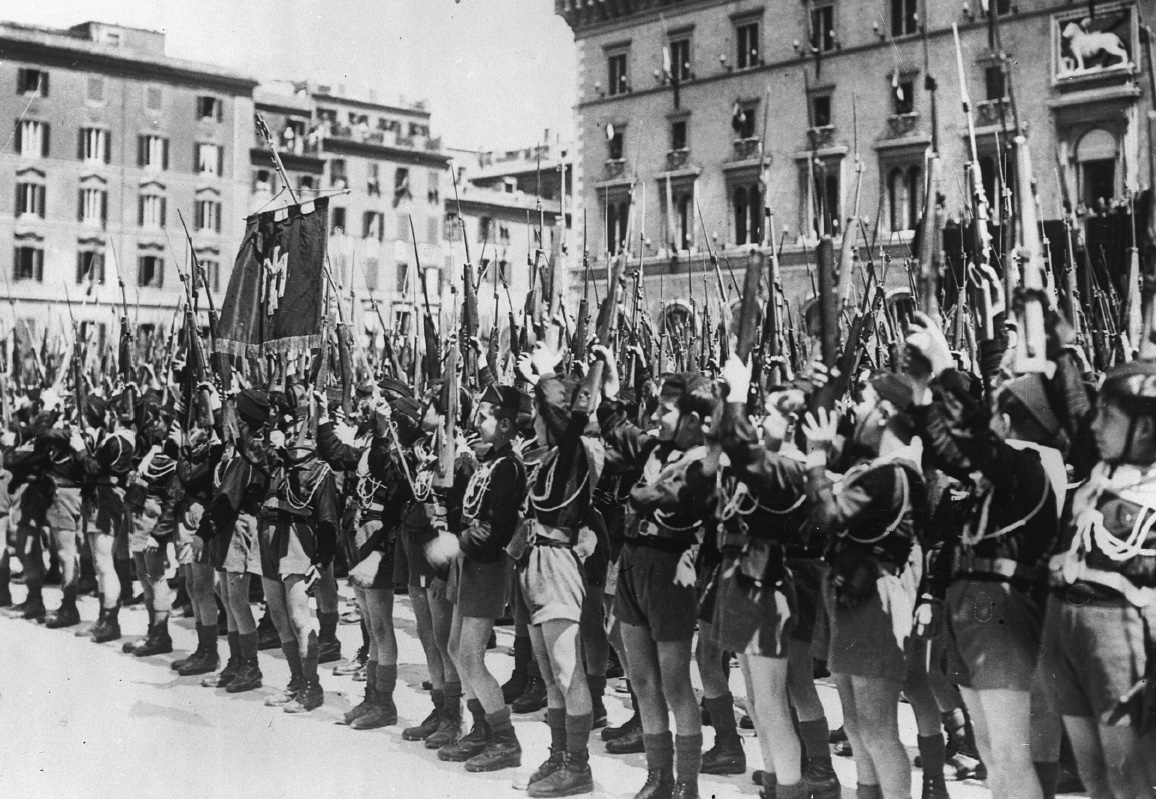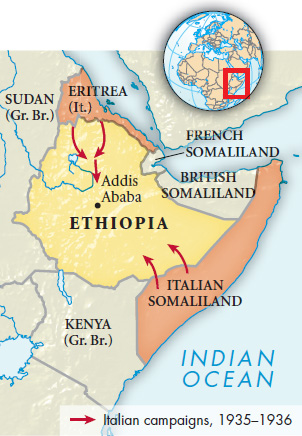A History of Western Society: Printed Page 909
A History of Western Society, Value Edition: Printed Page 912
The Regime in Action
Mussolini became prime minister in 1922, but moved cautiously in his first two years in office to establish control of the government. At first, he promised a “return to order” and consolidated his support among Italian elites. Fooled by Mussolini’s apparent moderation, the Italian parliament passed a new electoral law that gave two-thirds of the representatives in the parliament to the party that won the most votes. This change allowed the Fascist Party and its allies to win an overwhelming majority in April 1924. Shortly thereafter, a group of Fascist extremists kidnapped and murdered the leading Socialist politician Giacomo Matteotti (JAHK-oh-moh mat-tee-OH-tee). Alarmed, a group of prominent parliamentary leaders demanded that Mussolini’s armed squads be dissolved and all violence be banned.
Mussolini may not have ordered Matteotti’s murder, but he took advantage of the resulting political crisis. Declaring his desire to “make the nation Fascist,” he imposed a series of repressive measures. The government ruled by decree, abolished freedom of the press, and organized fixed elections. Mussolini arrested his political opponents, disbanded all independent labor unions, and put dedicated Fascists in control of Italy’s schools. Mussolini trumpeted his goal in a famous slogan: “Everything in the state, nothing outside the state, nothing against the state.” By the end of 1926 Italy was a one-party dictatorship under Mussolini’s unquestioned leadership.

Mussolini’s Fascist Party drew support from broad sectors of the population, in large part because he was willing to compromise with the traditional elites that controlled the army, the economy, and the state. He left big business to regulate itself, and there was no land reform. Mussolini also drew increasing support from the Catholic Church. In the Lateran Agreement of 1929, he recognized the Vatican as an independent state, and he agreed to give the church significant financial support in return for the pope’s support. Because he was forced to compromise with these conservative elites, Mussolini never established complete totalitarian control.

Mussolini’s government nonetheless proceeded with attempts to bring fascism to Italy. The state engineered popular consent by staging massive rallies and sporting events, creating Fascist youth and women’s movements, and providing new welfare benefits. Newspapers, radio, and film promoted a “cult of the Duce” (leader), portraying Mussolini as a powerful strongman who embodied the best qualities of the Italian people. Like other Fascist regimes, his government was vehemently opposed to liberal feminism and promoted traditional gender roles. Mussolini also gained support by manipulating popular pride in the grand history of the ancient Roman Empire — as one propagandist put it, “Fascism, in its entirety, is the resurrection of Roman-ness.”3
Mussolini matched his aggressive rhetoric with military action: Italian armies invaded the African nation of Ethiopia in October 1935. After surprising setbacks at the hands of the poorly armed Ethiopian army, the Italians won in 1936, and Mussolini could proudly declare that Italy again had its empire. Though it shocked international opinion, the war resulted in close ties between Italy and Nazi Germany. After a visit to Berlin in the fall of 1937, the Italian dictator pledged support for Hitler and promised that Italy and Germany would “march together right to the end.”4
Deeply influenced by Hitler’s example (see next page), Mussolini’s government passed a series of anti-Jewish racial laws in 1938. Though the laws were unpopular, Jews were forced out of public schools and dismissed from professional careers. Nevertheless, extreme anti-Semitic persecution did not occur in Italy until late in World War II, when Italy was under Nazi control. Though Mussolini’s repressive tactics were never as ruthless as those in Nazi Germany, his government did much to turn Italy into a totalitarian police state.